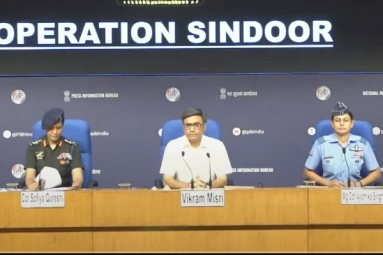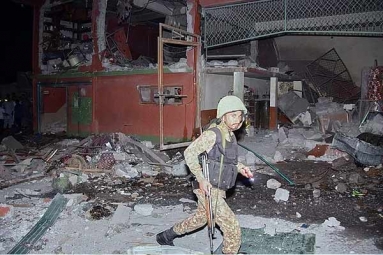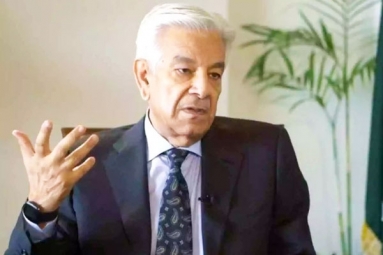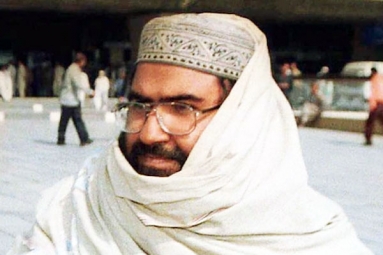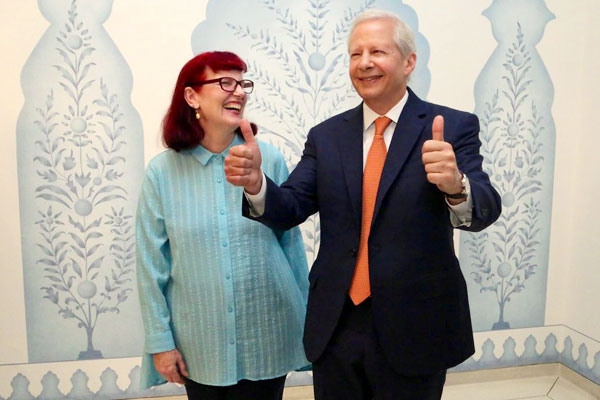
(Image source from: Twitter/Ken Juster)
Using new video and material technology, the radiant blue Indian-style murals have been recreated in the Blue Room at the Roosevelt House, the official residence of the United States Ambassador to India.
Unveiled on Thursday by the U.S. Ambassador Kenneth Juster, the Blue Room now shows recreated works by American artist Karen Lukas, who had initially created in 1995 at the invitation of then-Ambassador Frank Wisner and his wife Christine de Ganay.
Lukas, who found inspiration in the people and traditional arts of Rajasthan, carefully painted the designs over a course of several months, the embassy said in a statement.
 (Image source from: Twitter/Ken Juster)
(Image source from: Twitter/Ken Juster)
"When I first visited Roosevelt House in 2001, I remember vividly the murals in this dining room and how beautiful they were," said Juster, who had then been Under Secretary in the U.S. Commerce Department.
Roosevelt House itself has been the official residence of the U.S. Ambassador to India since 1961 and was designed with a vision that fused U.S. and Indian architectural influences. The architect, world-renowned Edward Durell Stone, developed ideas for the exterior from his travels through India.
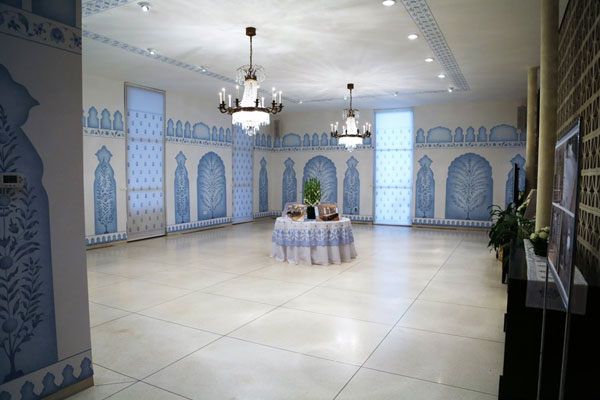 (Image source from: Twitter/Ken Juster)
(Image source from: Twitter/Ken Juster)
"Upon taking up his position as the U.S. Ambassador to India in November 2017, Ambassador Kenneth I Juster no longer saw the radiant blue Indian-style murals in the dining room that had been there during his visits to Roosevelt House when he had been Under Secretary of Commerce, 2001-2005," the statement said.
"Last year, Ambassador Juster got in touch with the artist to see if she could recreate her work. She offered to reproduce the designs based on her records. Using new video and materials technologies developed since the creation of the original work, Lukas and the firm EverGreene Architectural Arts were able to create the new Blue Room at Roosevelt House," the U.S. embassy said.
The Blue Room, which serves as the dining hall, supplements the historical section that shows photographs of different points in the U.S.-India relationship in the House's main hallway.
The restoration was supported by the American Chamber of Commerce in India, the U.S.-India Strategic Partnership Forum, and the U.S.-India Business Council and co-ordinated by the Fund to Conserve U.S. Diplomatic Treasures Abroad, a public-private partnership with the U.S. Department of State and its Office of Cultural Heritage.
By Sowmya Sangam





